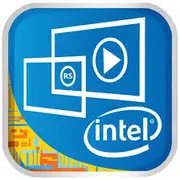Intel Core M-5Y71

Intel Core M-5Y71: An Ultra-portable Processor for Those Who Value Mobility
(Relevance Analysis in 2025)
The Intel Core M series processors, released in 2014-2015, were revolutionary for their time due to their combination of low power consumption and sufficient performance for thin laptops. A prominent representative is the Intel Core M-5Y71 based on the Broadwell microarchitecture. Despite its age, these chips are still found in used devices, and some new niche models (for instance, for educational institutions) may utilize them due to their availability. Let's explore who might find this processor interesting in 2025 and what compromises it offers.
Architecture and Manufacturing Process: 14 nm, Two Cores, and Modest iGPU
Broadwell Code, 14 nm, 2 Cores / 4 Threads
The Core M-5Y71 is built on the Broadwell microarchitecture (5th generation Intel Core). It is Intel's first 14 nm manufacturing process, which allowed for reduced power consumption and improved transistor density. The processor has 2 cores with Hyper-Threading (4 threads), a base clock speed of 1.2 GHz, and Turbo Boost up to 2.9 GHz. The integrated graphics is the Intel HD Graphics 5300, featuring 24 execution units and a frequency of up to 900 MHz.
Architecture Features:
- Emphasis on energy efficiency: the cores are optimized for low TDP (4.5 W).
- Passive cooling: The absence of a fan makes devices thinner (e.g., early MacBook 12").
- Support for technologies: AVX2, Quick Sync Video for 4K decoding, but lacking support for modern standards like PCIe 4.0 or DDR5.
TDP 4.5 W: Silent Operation, but Limited Boost
The TDP (Thermal Design Power) of 4.5 W is a key feature of the Core M-5Y71. This allows for the creation of fanless laptops, such as the Lenovo Yoga 3 Pro or Dell XPS 12 (2015). However, the low TDP limits the duration of Turbo Boost. For example, under load across both cores, the frequency may drop to 2.0–2.4 GHz due to overheating, even in well-designed casings.
Example Thermal Behavior:
- Short-term load (opening a browser): frequency rises to 2.9 GHz.
- Long-term load (PDF rendering): frequency stabilizes at 1.6–1.8 GHz.
Performance: Office Yes, Gaming No
Geekbench 6: 667 (Single-Core), 1125 (Multi-Core)
By 2025, these scores lag behind even budget processors like the Intel Celeron N5100 (around 800/1800). However, for basic tasks, the Core M-5Y71 remains functional:
- Office applications: Microsoft Office, Google Workspace, PDF work.
- Multimedia: 4K video playback (thanks to the Quick Sync decoder), but editing in DaVinci Resolve is impossible.
- Gaming: Only older or lightweight games (e.g., Minecraft at low settings achieves 25–30 FPS).
Turbo Boost Mode: The short-term boost to 2.9 GHz aids in "bursty" tasks, such as loading a heavy webpage.
Use Cases: Who Is the Core M-5Y71 Relevant for in 2025?
1. Secondary Market: Used ultrabooks (price $150–$250) — an option for students or as a temporary solution.
2. Specialized Equipment: Terminals, information kiosks where silence is crucial.
3. Office Tasks: Document work, Zoom conferences (but no background filters).
Who It’s Not Suitable For:
- Gamers and video editors.
- Users of modern OS with heavy updates (for example, Windows 11 requires more resources).
Battery Life: Up to 8 Hours — But Only with a New Battery
With a battery capacity of 40–50 Wh, laptops with the Core M-5Y71 in 2015 provided 7-9 hours of operation. By 2025, battery wear reduces this time to 3-5 hours.
Power-saving Technologies:
- Intel SpeedStep: Dynamic frequency adjustment.
- Panel Self-Refresh: Reduces GPU load when displaying static images.
- C-States: Disabling unused cores.
Tip: Replacing the battery and using Linux (e.g., Ubuntu Lite) can extend battery life.
Comparison with Competitors: What Were Compromised in 2015?
- AMD A6-8500P (2015): Better graphics (Radeon R5) but TDP of 15 W and heating.
- Apple M1 (2020): A revolution in energy efficiency — 3-4 times the performance at similar TDP.
- Intel Core i5-5200U (2015): 15 W TDP, but stable frequency of 2.7 GHz and higher multithreading.
Conclusion: The Core M-5Y71 lagged behind even its contemporaries in performance but excelled in portability.
Pros and Cons in 2025
Strengths:
- Passive cooling — perfect for quiet devices.
- Sufficient performance for Linux and lightweight OS.
- Low cost of used devices.
Weaknesses:
- Outdated technical support: no security updates for the chipset.
- Weak multithreading.
- No support for USB 3.2, Wi-Fi 6.
Recommendations for Choosing a Laptop
If you are considering a device with the Core M-5Y71 in 2025:
1. Device Type: Ultrabook with SSD (minimum 256 GB) and 8 GB RAM.
2. Check the Battery: Replace if capacity is below 70%.
3. Operating System: Choose Linux (Lubuntu, Xubuntu) or Windows 10 LTSC.
4. Price: Don't overpay — new budget laptops (e.g., based on Intel N100) cost $300–$400 and are more powerful.
Examples of Models from 2015-2016:
- Asus ZenBook UX305
- HP Spectre x2
- Microsoft Surface Pro 4 (partially).
Final Conclusion: Who Is the Core M-5Y71 Still Relevant For?
This processor is suitable for those who:
- Seek the cheapest laptop for text tasks.
- Value silence and compactness.
- Are willing to accept limitations in exchange for a price under $200.
Key Benefit: Ultra-portability and "nostalgic" reliability of devices from the peak era of ultrabooks. However, for most users in 2025, it’s better to focus on modern Intel Alder Lake-N or AMD Mendocino processors, which offer a better price-to-performance ratio.
Basic
CPU Specifications
Memory Specifications
GPU Specifications
Miscellaneous
Benchmarks
Compared to Other CPU
Share in social media
Or Link To Us
<a href="https://cputronic.com/en/cpu/intel-core-m-5y71" target="_blank">Intel Core M-5Y71</a>